Iconic Fuji-san
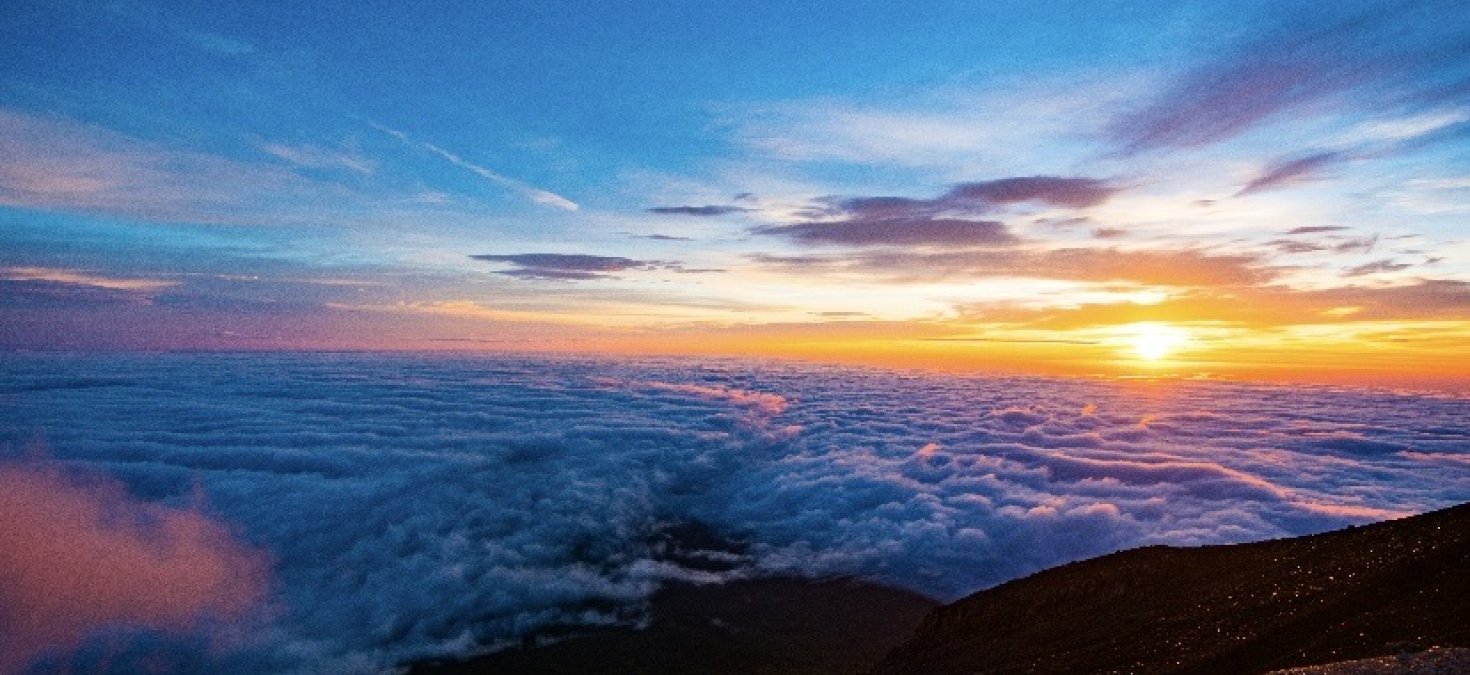
By Michael Barna, Friend of Japan House
Ask anyone to name the most iconic symbol of Japan and invariably, they will say Mt. Fuji. Towering over the country as its highest peak, the beauty of the almost perfect symmetry of its shape, and the contrast of its peaceful nature silently masking the power within, Fujisan has captivated the hearts and minds of artists, writers, geologists, and countless others who gaze upon it. While most often viewed from afar, for many, climbing its sacred slopes is one of the “must-do” activities when visiting Japan.
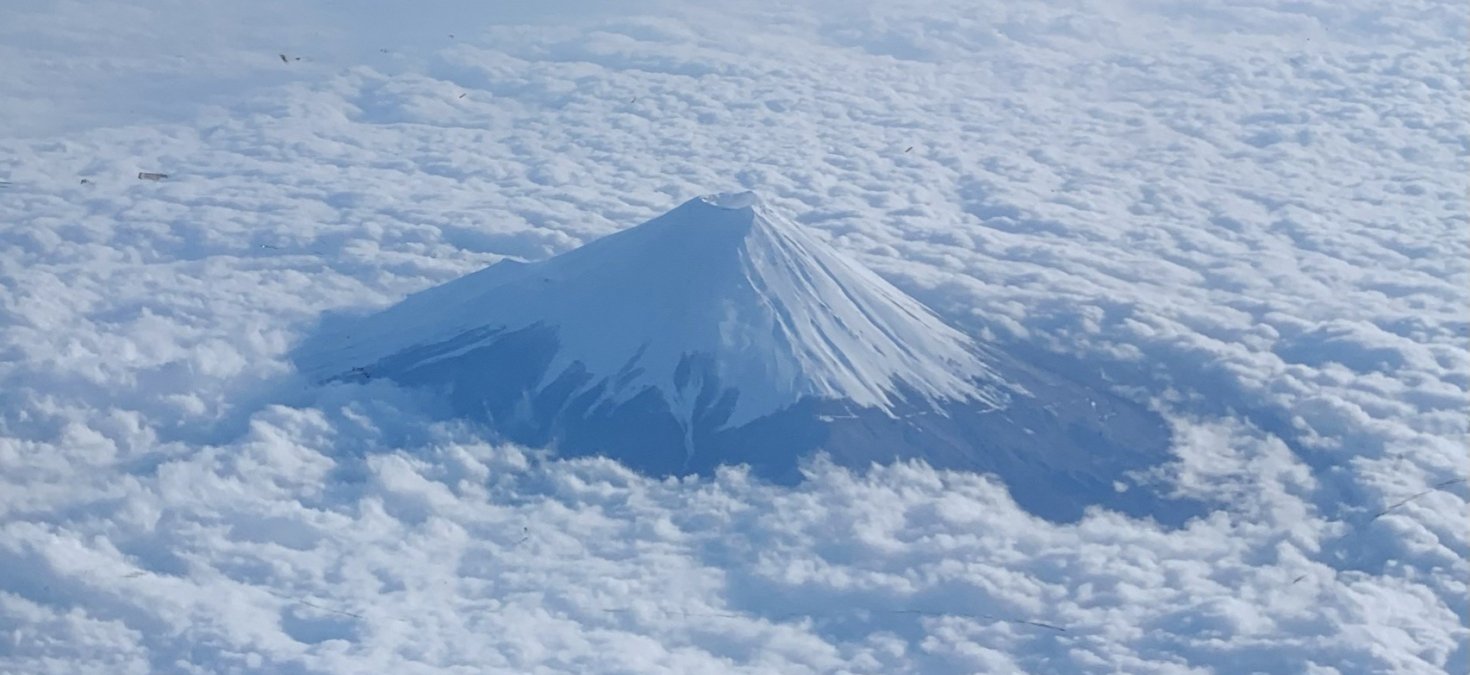
Mt. Fuji stands tall at 3, 776 meters (12,388 feet).
Being one never to shy away from challenges (I have completed an Olympic length triathlon, sat through thirteen Wagner Ring Cycles, backpacked rim-to-rim in the Grand Canyon), climbing Mt. Fuji has been on my bucket list since my first visit to Japan over 17 years ago. Since then, I have had a fascination with Mt. Fuji and my daily commute would not be complete if I were not searching for the elusive peak, often hidden among the clouds, approximately 50 miles away. Being disappointed that Fujisan was closed to hiking during last year’s pandemic, the trails were open this year and the opportunity to experience Fuji was beckoning, so naturally, I had to go.
My desire to summit Fuji was twofold; to cross off a bucket list item and to experience a part of Japan most would never be able to do. It would be a challenge of both physical and mental endurance to hike the approximately 12 miles round-trip, gaining over 4,500 ft. in elevation to a height of 12,388 ft. Despite the information claiming that ascending the trail does not require technical expertise and most everyone can reach the summit, one does not approach Fuji-san lightly. It is not a “walk in the park.” One must carefully prepare food and water for the journey, equipment to deal with cold and harsh temperatures at the top of the mountain in the early morning hours, and probably, and most importantly, one must prepare mentally to endure the hours of climbing.
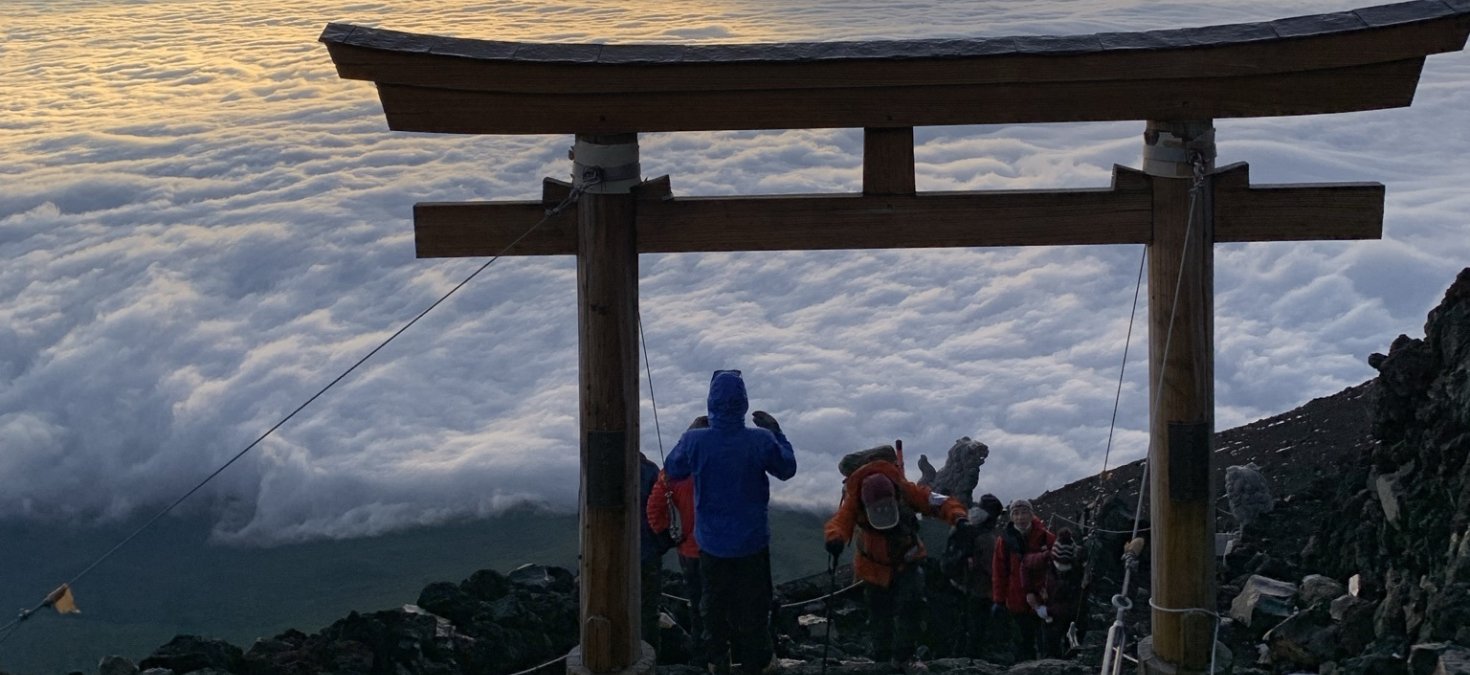
On average, it takes about 7 hours to reach the summit and about 5 hours to descend.
It is easy to want to give in to the rigors of the climb. The slope is extremely rocky and steep, often requiring a bit of scrambling. The air gets thinner with each step higher and breathing becomes more labored. The lack of shade means one is relentlessly subjected to the blazing sun. And yet, step-by-step, mile-after-mile, one perseveres. And perhaps, if lucky, one can find a sense of calm and serenity in an almost Zen-like existence where your actions are guided by intuition rather than conscious thought. Slow, rhythmic breathing, coupled with short, methodical steps that calm the body rather than stress it was my key to enduring the climb.
Yet, despite looking up and ahead to see only the top of the mountain and a seemingly endless rocky trail, one can turn around and appreciate the view of Japan at your feet, the intense colors of the volcanic soil, the ever-changing cloud formations as they dart around the mountain, and the peacefulness. The quiet solitude, even with other people around, seems reverential and meditative.
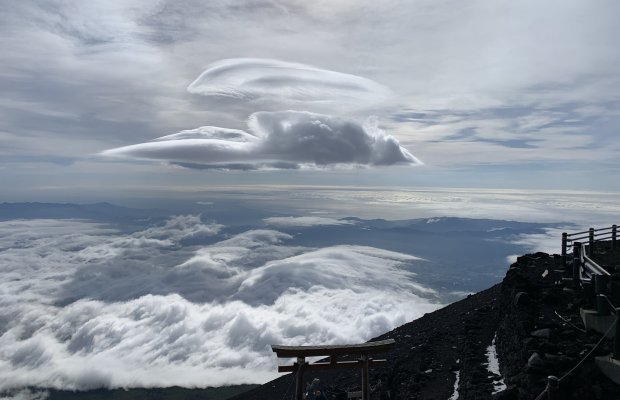

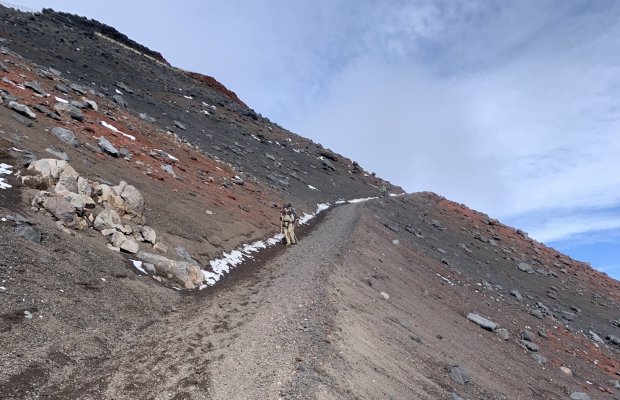
Curiously, I thought of the tea ceremony while climbing. Not only is it a time to fully explore many of one’s senses, but I reflected on the idea that each tea bowl carries the experience of every person who has ever used that vessel, and similarly, Mt. Fuji carries the experiences of each person who has ever climbed up its steep slopes. And with each step, I too, added to the history and spirit of those that had gone before me for thousands of years.

Reaching the top was met with both a sense of relief and exhilaration. Joined with hundreds of other people in the darkness of night, awaiting the sunrise, people huddled together in the frigid cold and blustery winds awaiting the first signs of light from the East. Eventually, the mists and clouds surrounding the summit gave way to the sun rising above the clouds far below, and the cheer of greeting the new day was shared by all. We had braved the final kilometers of hiking in the dark, the bone-chilling winds and the near-freezing temperatures to be in a special place that most people will never experience. The sunrise was enough to bring tears to my eyes for having the privilege to be in this space at this moment, and I gave silent thanks for being able to witness and savor the moment. The sweat and struggle of the journey was replaced with the awe and beauty of nature unfolding before us and we were all experiencing a moment never to be recreated again.
Perhaps climbing Mt. Fuji is a metaphor . I have often reflected on the transition from a relatively quiet Midwestern existence to moving and living in arguably the world’s largest megalopolis and adjusting to a new culture. It was not without its challenges. What was easy and comfortable back in the US was now new and unusual. The struggles of communicating and doing daily chores was real. But, like climbing Fujisan, step-by-step, struggling for air in the freezing cold up the steep slopes, one acclimates. One prepares and then accepts the challenges as best as one can. One takes a deep breath and takes small, measured steps. One adapts. One makes progress. And eventually, little-by-little, we succeed. We reach the summit and look back from where you were far below and compare it to where you are now. One looks around and sees the horizon and the possibilities. And, like being atop Mt. Fuji, the view is wonderful!
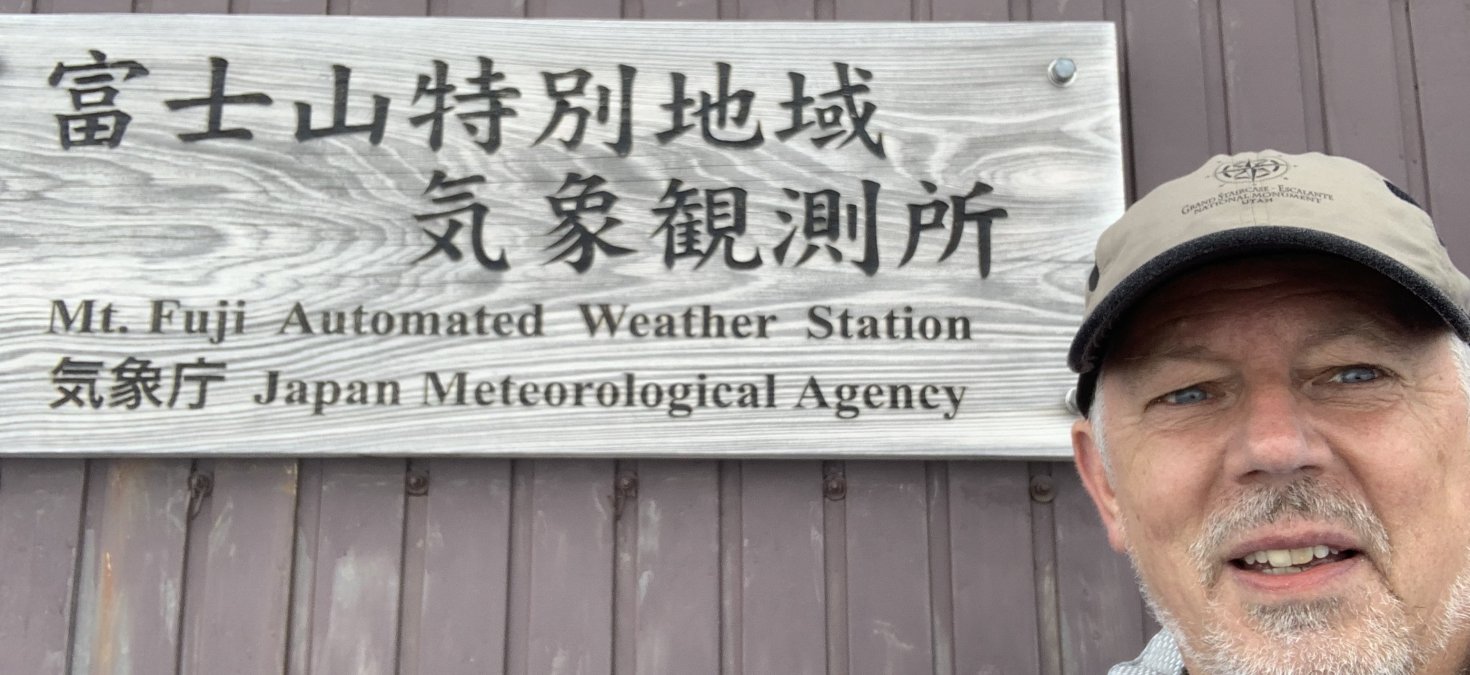
Michael takes a selfie at the Mt. Fuji Automated Weather Station!